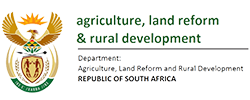Commentary: Trade implications of US-China trade war on South Africa’s agriculture
By Ms Onele Tshitiza (otshitiza@namc.co.za)
Introduction
The United States of America (USA) has been trading in the global economy since the 1930s, following the first Reciprocal Trade Agreements Act (RTAA) of 1934, and has a long history of trading ties with other countries. In those earlier years, there were no set international agreements on tariffs and other rules of trade, and tariffs were high (USITC, 2009). Since then, the country has signed multiple trade agreements with its trading partners, as well as removed, modified and added on its trade policies. Over the 20th century, much of the US economy was built on trade, relying on intermediate goods from other countries. Literature notes that trade liberalisation has benefited the United States positively, maybe more than the loss of opening up the market.
According to the Council on Foreign Relations (CFR, 2019), the People’s Republic of China and the USA have not always traded with each other, emanating from the tension in 1949 when China gained its power from the Nationalists, which the USA support. It was only in the 1970s, when China opened its doors to the United States, that talks started between the two countries. However, the relationship has not always been smooth, with the USA banning trade with China in the 1980s over political disagreements. Official trade between China and the USA was reinforced in 2000, which paved the way for China to be a part of the World Trade Organization on 11 December 2001.
Rationale behind US – China trade war
The argument by the US president for an increase in tariffs is that China is forcing American companies to transfer their technology, intellectual properties and innovation to domestic companies in China, putting US companies and the US economy at a disadvantage (USTR, 2019). The initial tariffs were targeted at technological and machinery products or parts from China, but have since expanded to all imports including agricultural products. The administration, amongst other things, rationalises that the local prices of US goods would be cheaper than Chinese imported goods, making consumers buy locally produced products.
There is no doubt that businesses and consumers will suffer in both countries, although the extent might not be known at this point. Not only will the countries involved be affected, but the rest of the world too.
How is South Africa affected?
South Africa exports many products to China, which are directly or indirectly re-exported to the USA as processed products. Overall, these exports amounted to US$ 8.6 billion (R114.0 billion) in 2018. Some of the raw materials that China uses for machinery, textile and food processing such as minerals, fruits, skins & hides and wool come from South Africa. South Africa’s steel industry has already experienced the effects of an increase in tariffs, whereby many companies have cut down on jobs due to an inability to keep up with the high duties that the USA has imposed on the industry. If the trade war continues, this could affect the trade of agricultural products with China as demand for SA products diminishes in China.
To date, the USA has imposed approximately $200 billion (R2.9 trillion) worth of goods from China, and China has retaliated with tariffs valued at $60 billion (R875.8 billion) on America’s goods. The full list is provided by the US Trade Representative (USTR, 2019), with over 5 000 full or partial tariff lines. The USA has proposed tariffs on a further $300 billion worth of products from China. Those goods subject to the new tariff from China include minerals used in manufacturing, various agricultural products, foods, beverages, ores, mineral fuels, inorganic and organic minerals.
Remarks
The world is now a global village and no single event like a trade war happens in isolation from other external factors or parties. The ongoing tug and pull happening between China and the USA will not only affect those two countries but could have a ripple effect on other trading countries in the short and long run, especially developing countries. The effects might differ from country to country, depending on their level of connection with directly or indirectly affected countries, thus creating volatility in the global economy and making countries worse off. It is therefore important for structures governing global trade policies to intervene so that an agreement is reached, sooner, rather than later, before the whole global economy is in turmoil.


